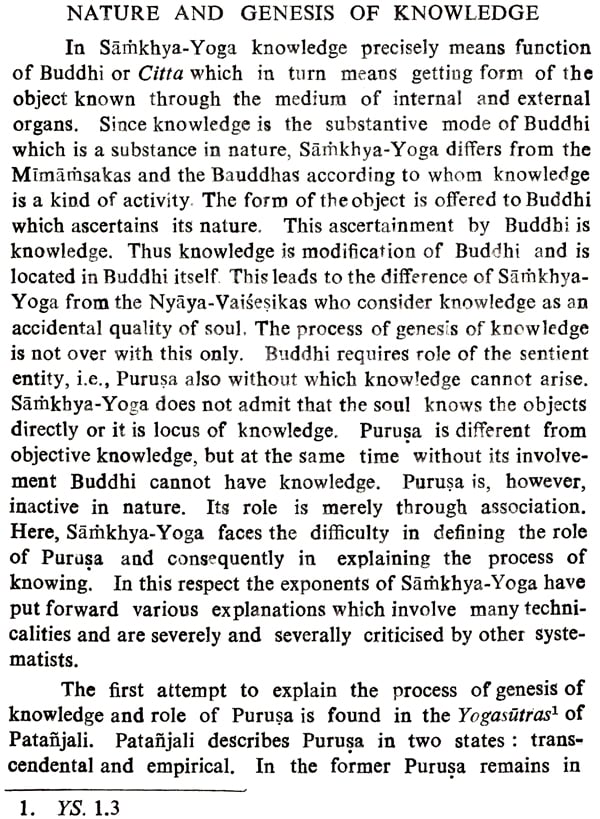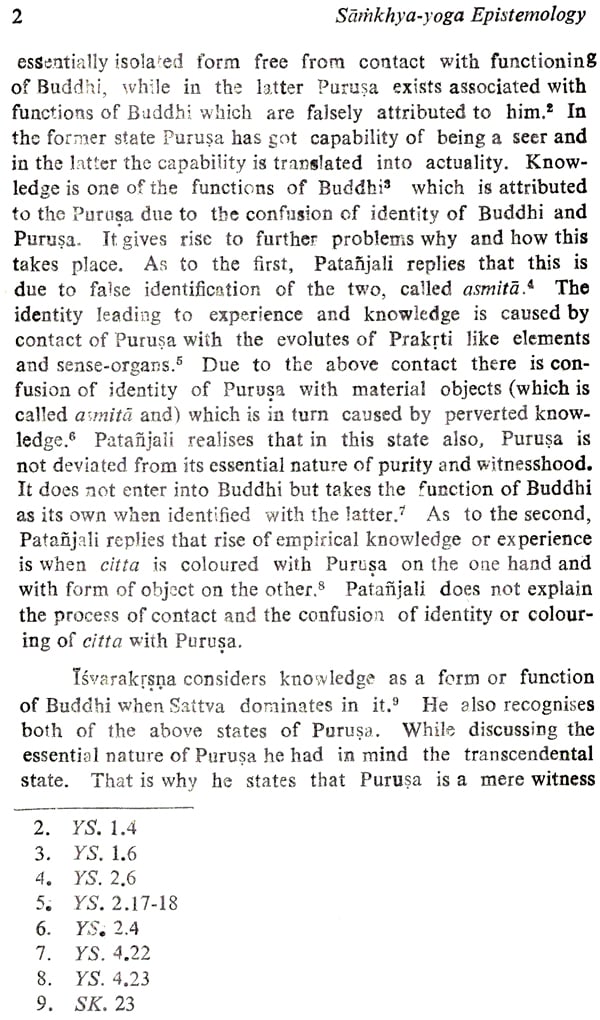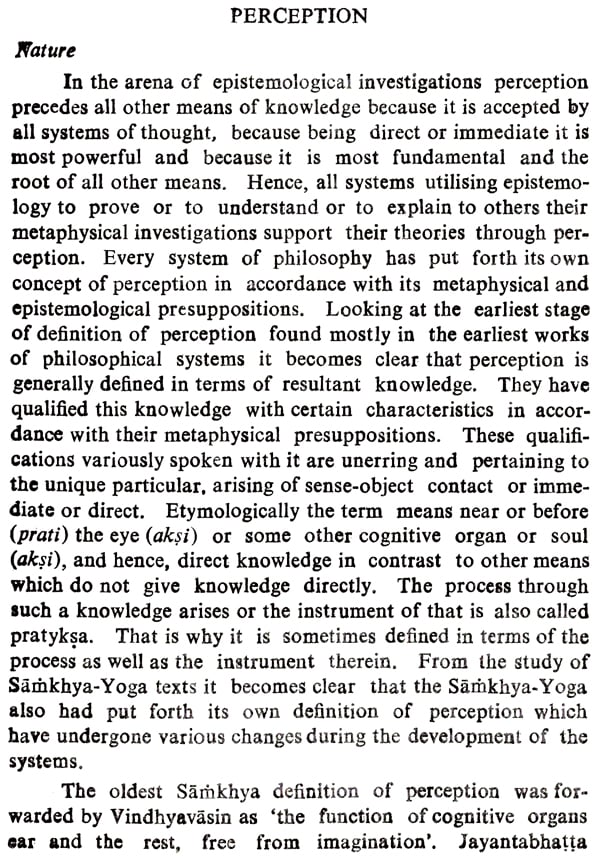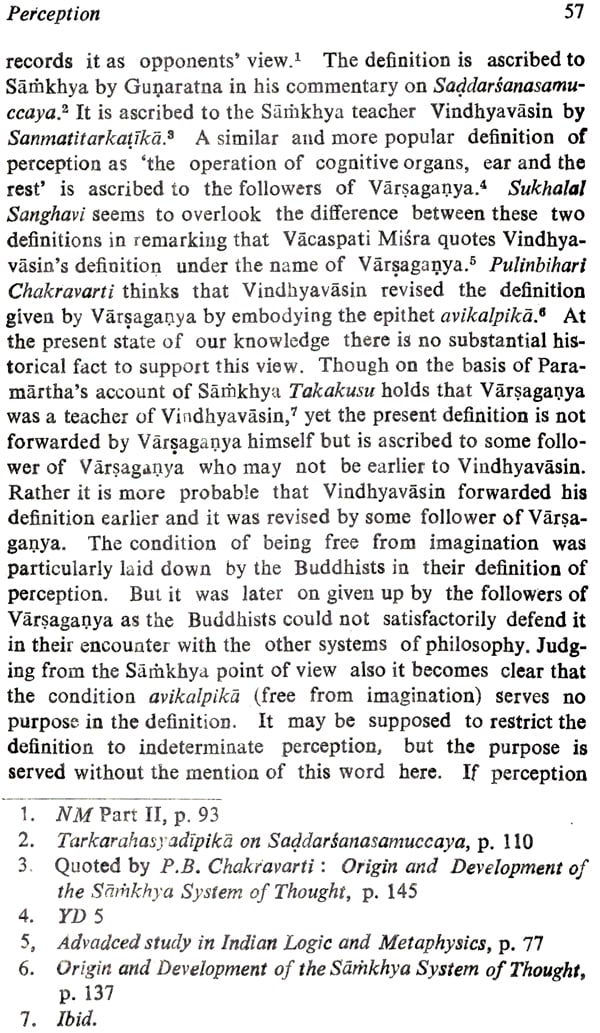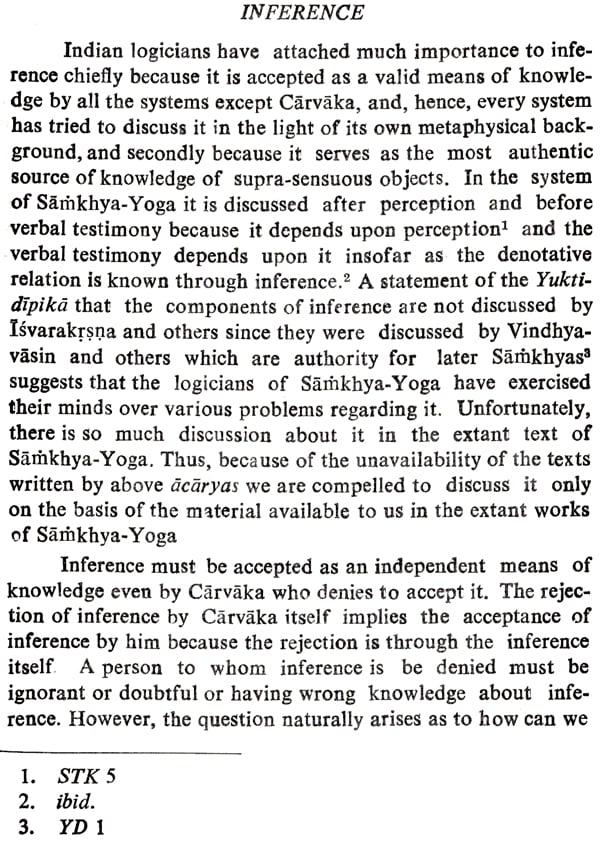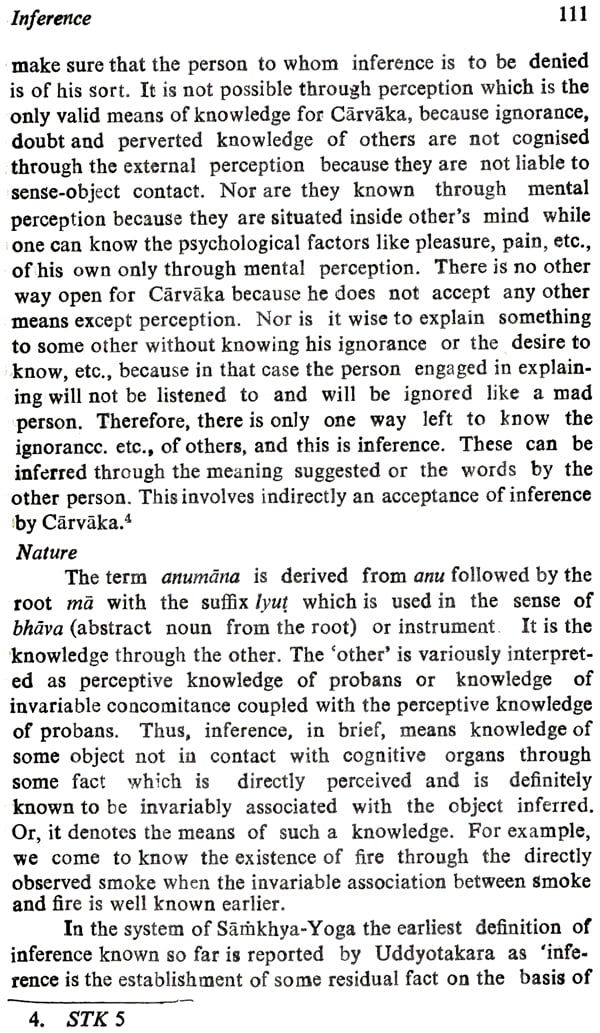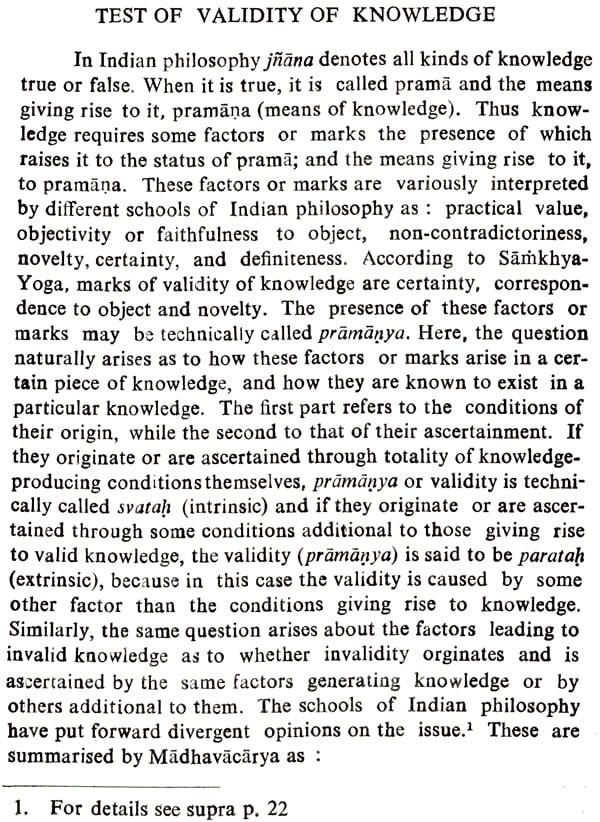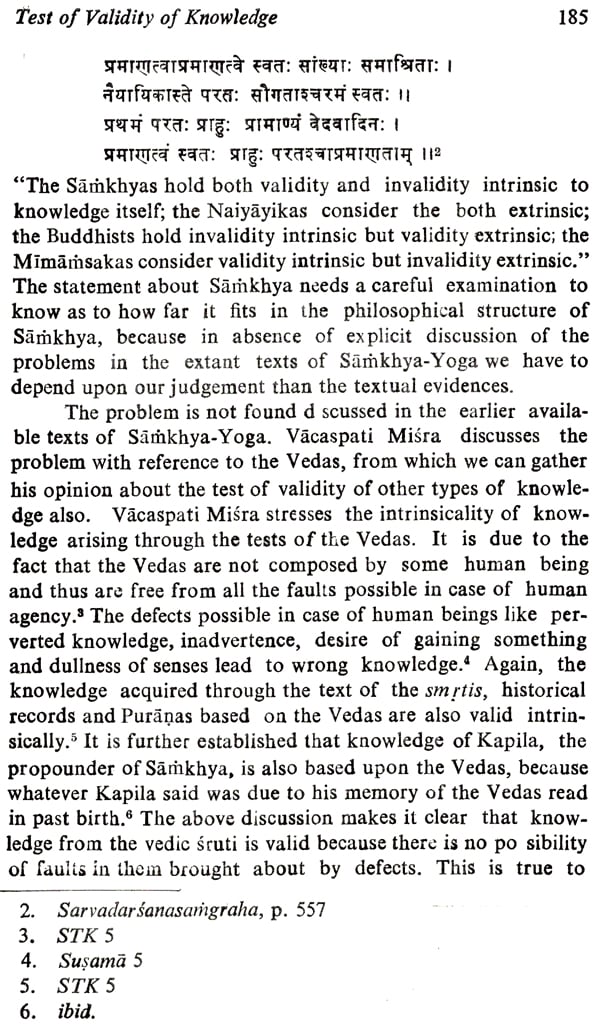
Samkhya Yoga Epistemology (An Old and Rare Book)
Book Specification
| Item Code: | NAR615 |
| Author: | Dr. Shiv Kumar |
| Publisher: | Eastern Book Linkers |
| Language: | English |
| Edition: | 1984 |
| Pages: | 232 |
| Cover: | HARDCOVER |
| Other Details | 9.00 X 6.00 inch |
| Weight | 360 gm |
Book Description
The present work, as the title suggests, aims at a comprehensive and critical study of Samkhya -Yoga theory of knowledge. Such an aim is achieved through analysing the material available in the Samkhya -Yoga texts and through studying it critically with due consideration of its criticism at the hands of other systematises. This will lead to a critical evaluation of the Samkhya -Yoga treatment of the problems about knowledge and its means. It is further calculated to lay bare the points of agreement and controversies between Sarhkhya-Yoga and the other systems on various issues falling under the broad heading of knowledge.
Though Samkhya and Yoga systems have found a place of honour separately in the group of the iistika darianas in Indian philosophy, yet we have taken them together for the present purpose, because the general metaphysical and epistemological standpoints and the conceptions of the ideal of life in both the systems are the same. The Samkhya and the Yoga systems are closely related from a remote past. Here, we do not discuss the problems of their historical relation during the course of their development. We do not scrutinize the problems like whether the two systems represented altogether different systems or two aspects of one and the same system and if they were different, how, why and by whom they were brought that close. The classical texts of the Samkhya -Yoga available at present leave an impression on our mind that they are two systems suggesting different ways of liberation but having fundamentally the same metaphysical and epistemological foundations. There are only a few differences between Samkhya and Yoga in the field of epistemology, which are duly stressed in the present work.
The Samkhya and Yoga are considered to be very old. Their great antiquity, the authority of their profounder, their rational and realistic approach to and explanation of the problem of reality are some of the main reasons which have raised these systems to a place of honour in the systems of Indian philosophy. In the field of Indian philosophy these systems represent the first attempt to systematize the philosophical thinking taking advantage of which the other systems have tried new lines of thought or avoided the drawbacks. This is true to a greater extent in the case of Vedanta. Thus, the present work purposes to reveal the epistemological doctrines which served as a basis for the advanced theories in other systems.
Many Samkhya -Yoga works are lost to us. The phenomenon of gaps in the literary continuity, which is common to all other systems of Indian philosophy, is most conspicuous in the case of Samkhya -Yoga. The earliest available work of the Yoga system is the Sutras of Patanjali; of the Samkhya, the Scirhkhyakiirikei of hvarakrsna Upto the time of Patel.*li and hvarakrsna we know only the bare names of Samkhya -Yoga authors and a few brief references to their views. Later on, we find the Yogabhcisya of Vyasa and the commentaries on the Seithkhyakcirika like Yuktidipika, Mcitharav rtti, Gaudapada-bhcisya, Jayamahgalii, etc. Then after a gap of four or five centuries we have the commentaries of Vacaspati Mira on the Siirhkhyalcarikii and Yogabhasya. Then there is again a gap of centuries till we get Aniruddha's commentary on the Samkhya -sutra and Vijlianabhiksu's commentaries on the Yogabhasya and the Sarhkhyasiltra. To reconstruct the development of the theories of the Samkhya -Yoga during the periods of the literary gaps we must have recourse to the scattered records of the theories in the texts of other systems. However, it must be admitted that sometimes the critics do not give a faithful representation of the theories of their opponents. Some of the points recorded by other systematic are corroborated and some are not. The first category presents a more comprehensive picture of Samkhya Yoga theories while the second can be further classified into (i) arguments faithful to and consistent with the main line of thought and (ii) arguments of the nature of a distortion either through ignorance or on purpose.
**Contents and Sample Pages**

